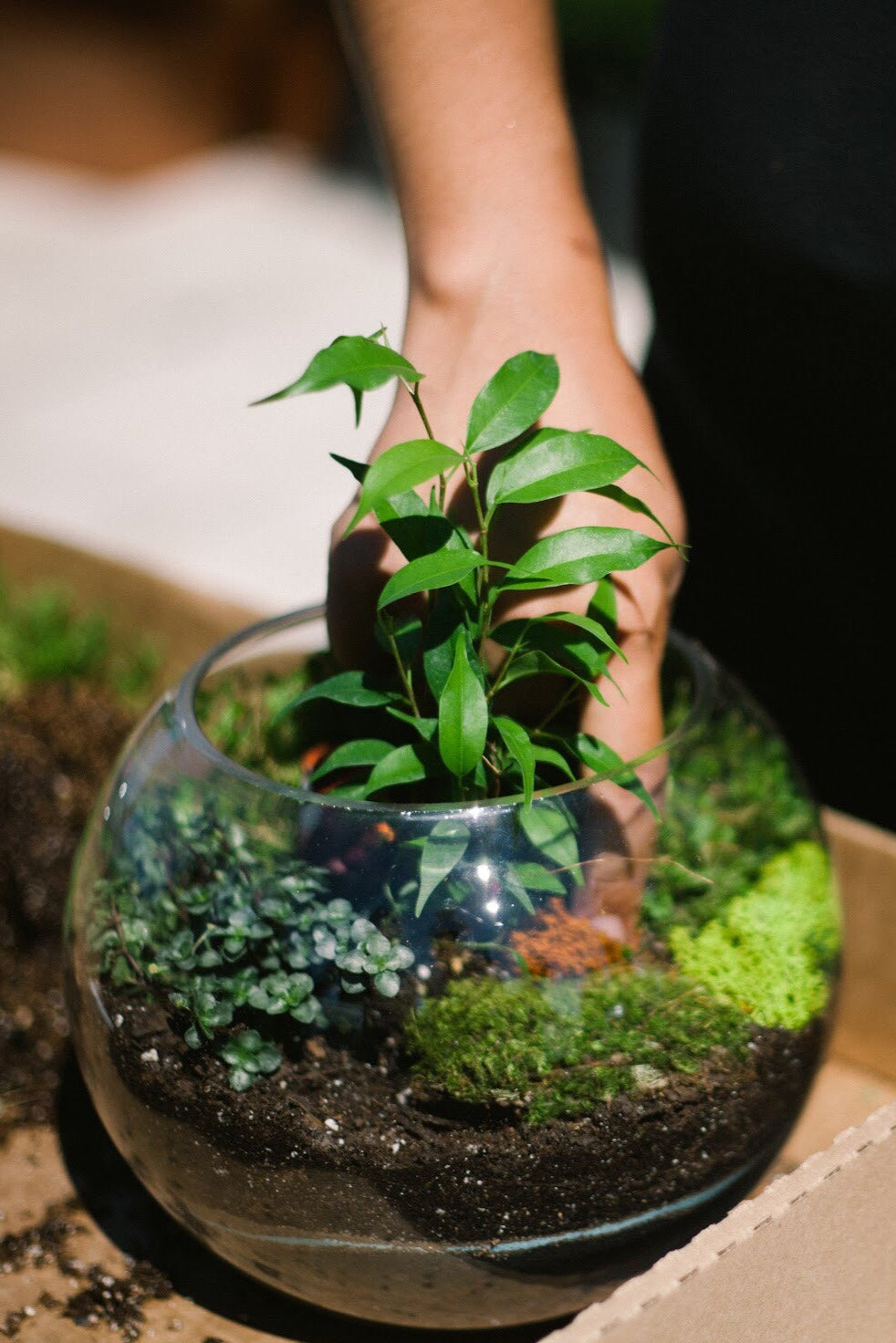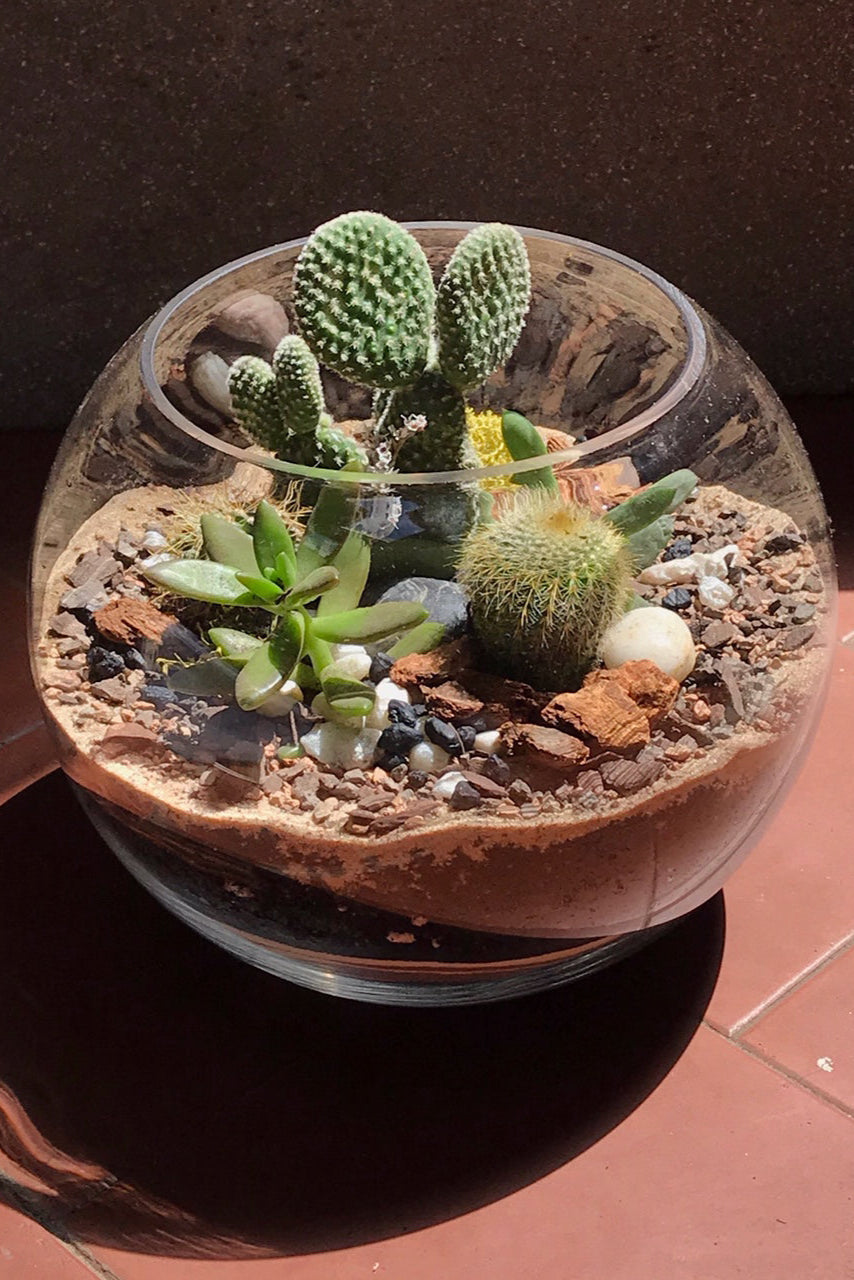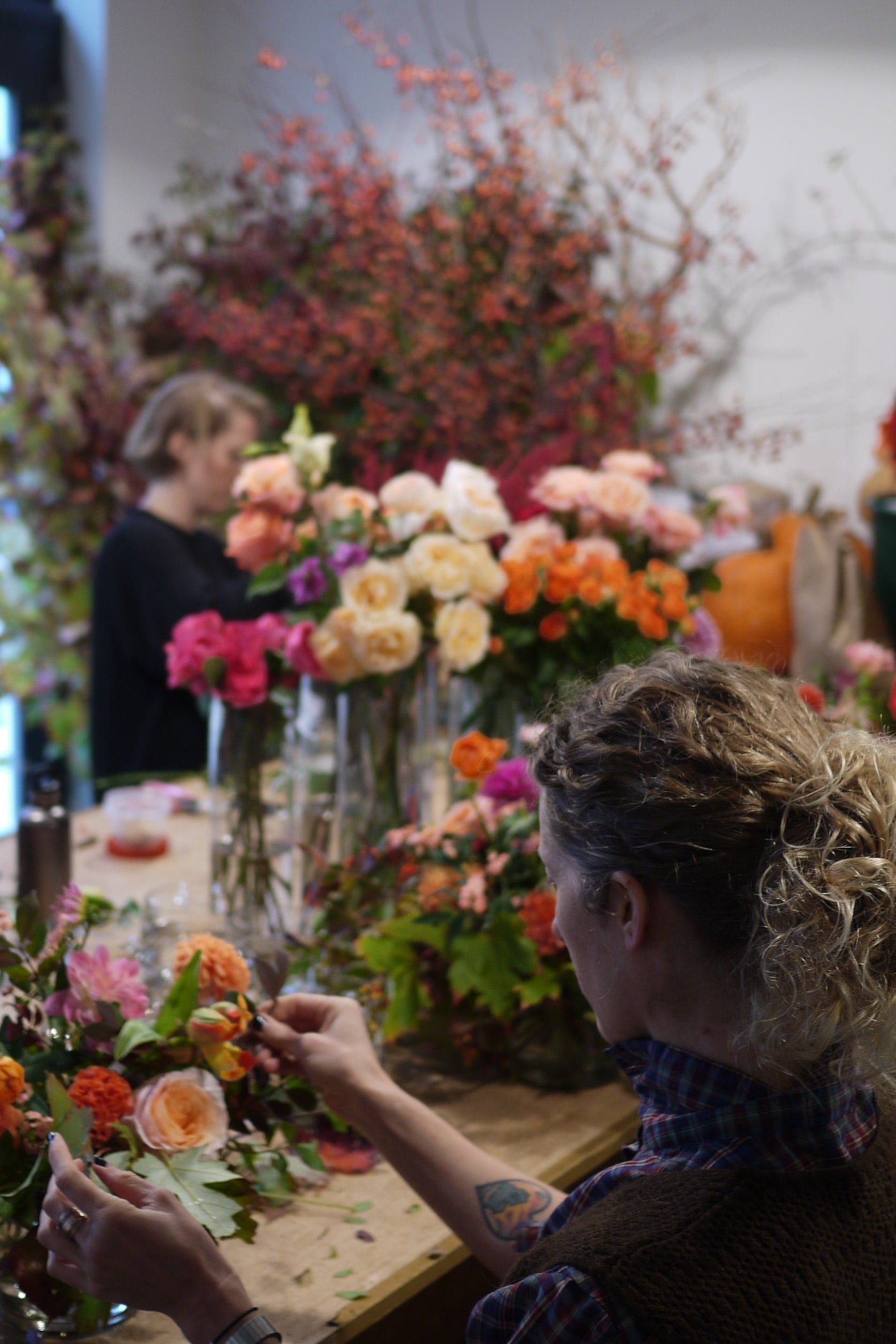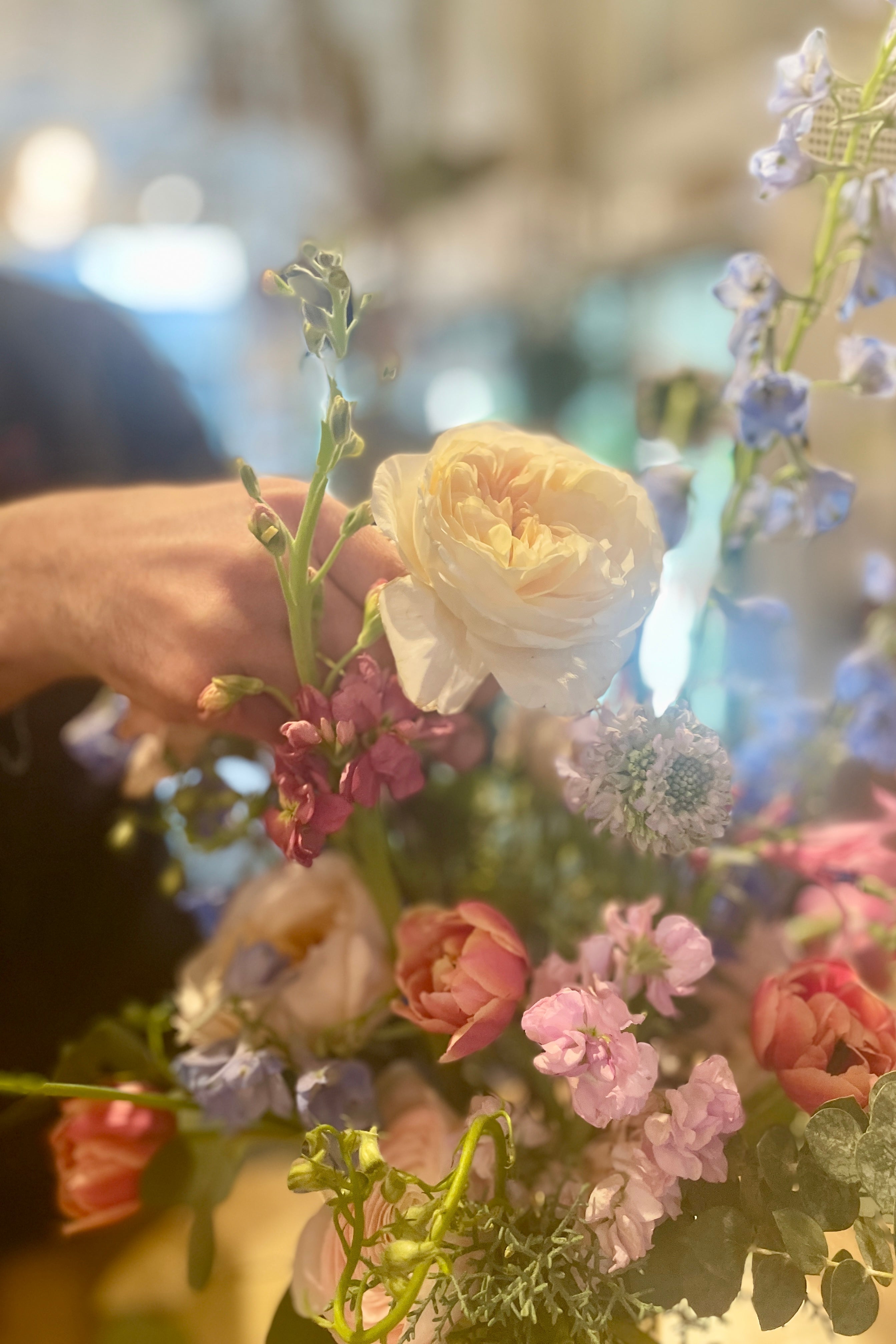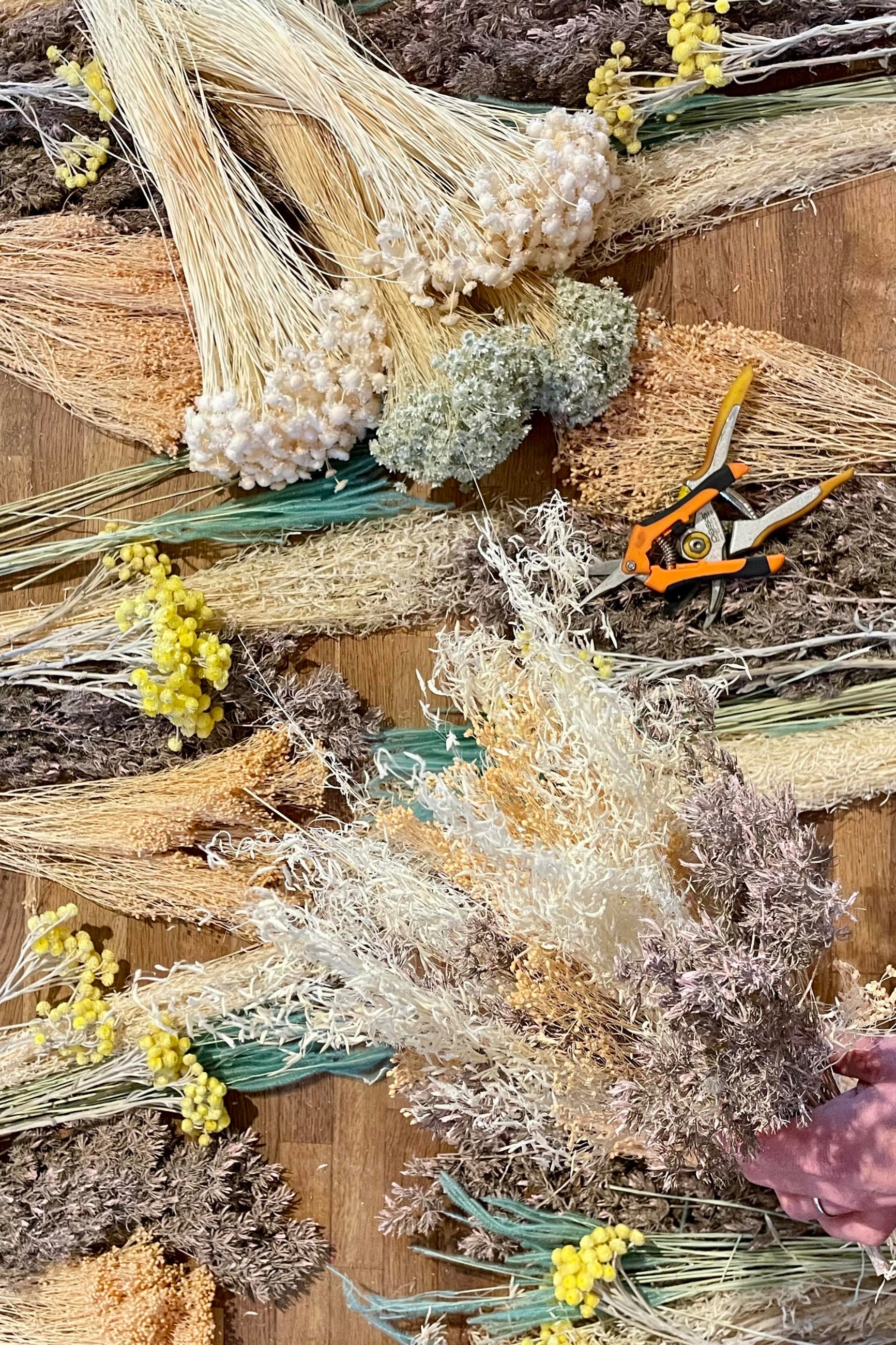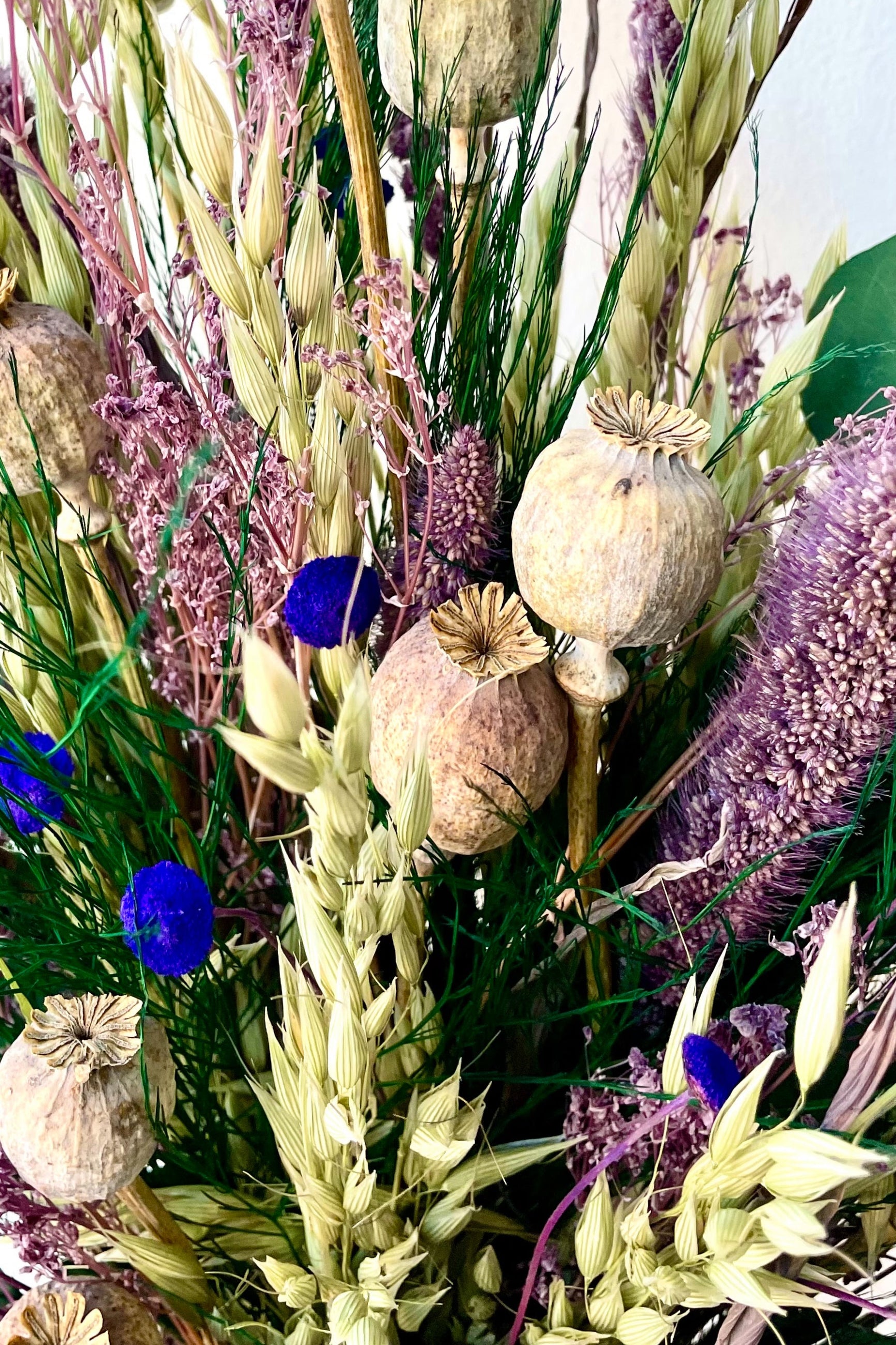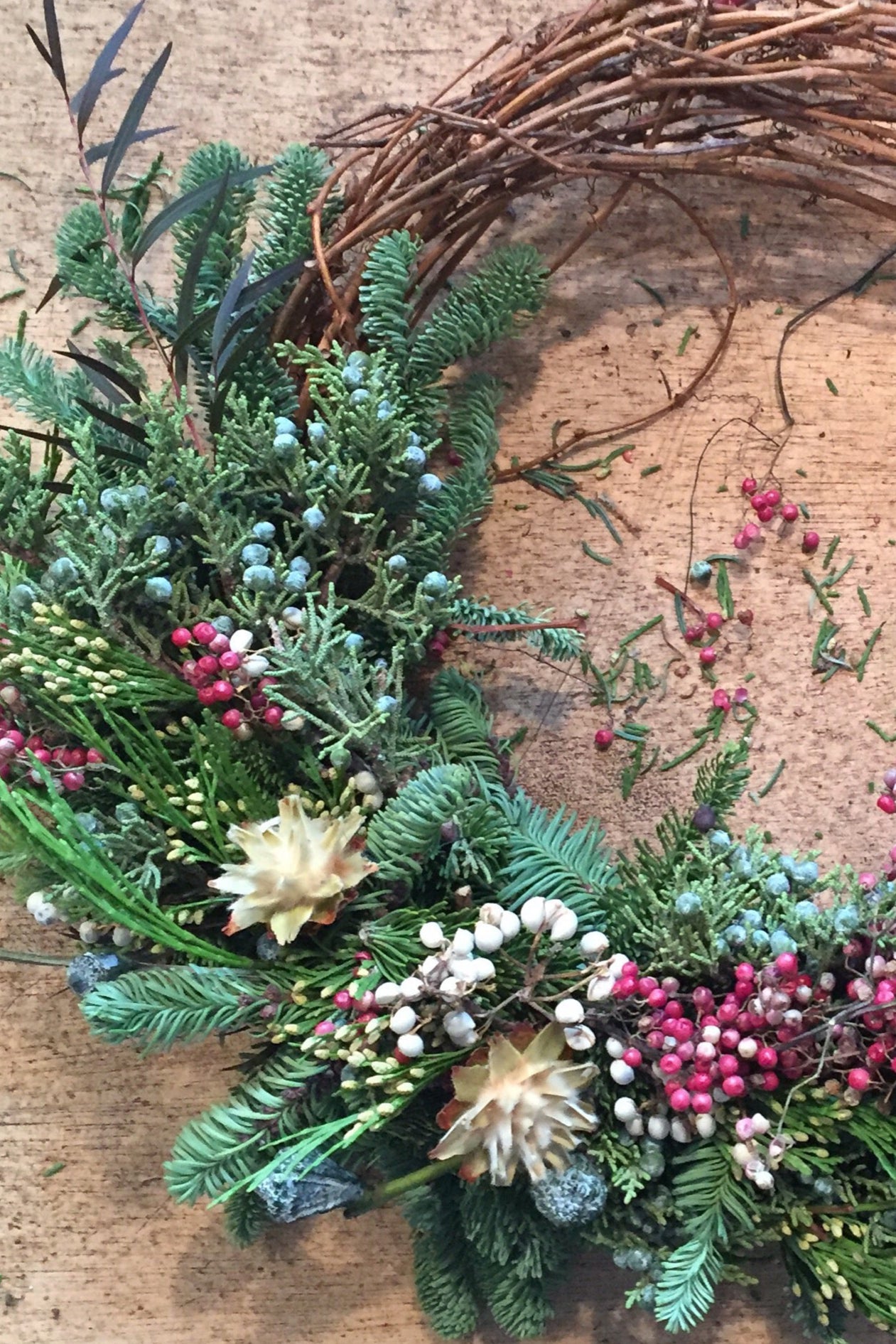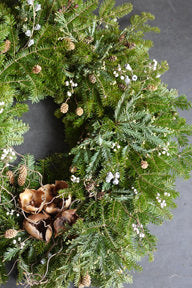Terrarium Care
Cactus & Succulent or "Desert" Terrariums
Light Needs: Full sun/Direct rays - Western or Southern exposure
Watering:
- There are a number of ways to water your terrarium plants, but the goal is to keep it minimal. In order to do that, we recommend using a measured amount of water (about the volume of a tall shot glass). Pour up to 3 shots, per plant, every two weeks or when the soil is dry. You can also use the directional stream of a spray bottle to water terrariums. This way, you are able to better control the amount of water that goes in, eliminating worries of over-watering. Be sure to spray enough to saturate the soil at the base of each plant so that it absorbs into the roots. Pay attention to the leaves of your cacti and succulents. They need the soil to dry out completely between watering, but the plants themselves will be good indicators of thirst. Succulents hold water reserves in their leaves. If they are happy, the leaves will appear full and firm. If they are thirsty, they will begin to deplete the water reserves in their leaves and appear puckered - like a deflating balloon.
- Despite being planted together, some plants may need water when others do not. This means that each plant should be treated individually within the terrarium. Do not water cacti more than once a month. Do not water succulents until their leaves begin to pucker.
- Generally speaking, desert terrariums will need water once every four weeks. When the sun is strong during the summer, these plants may need water every two or three weeks. During the winter, most succulents and cacti are dormant and may not need water at all until spring. Just make sure to pay attention to the leaves, and water as needed.
- Covered terrariums should be left open for at least half of the week for air circulation. Just like us, plants need to breathe. If you notice condensation building up on the glass, remove the cover and air it out. Succulents prefer a very arid (dry) climate and will begin to rot if surrounded by too much moisture, whether in the soil or in the air.
Trouble Notes:
- Collapsed or mushy leaves indicate over-watering
- Bottom leaves dropping may indicate lack of proper light
-puckered leaves may indicate lack of water
